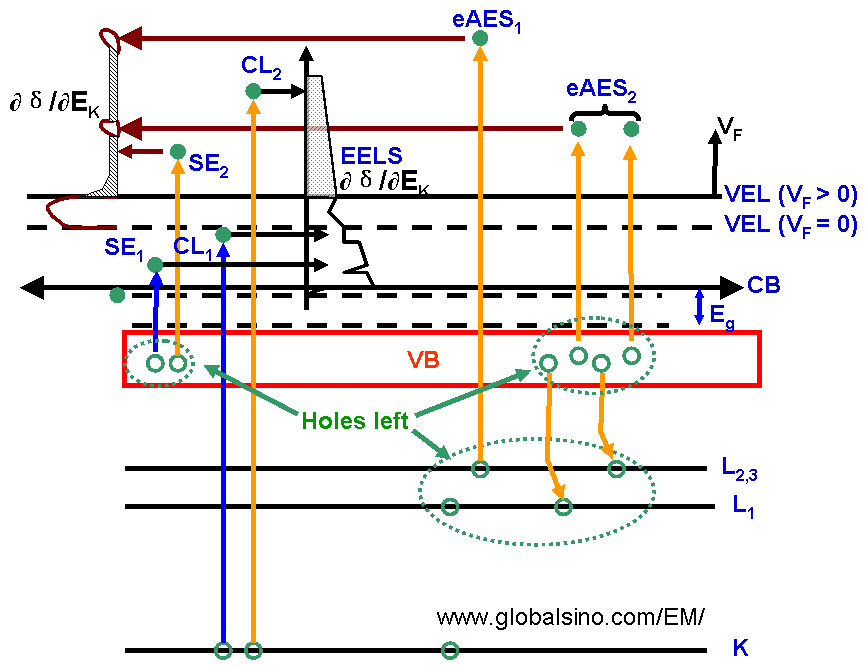|
|
Ionization Damage (radiolysis) by Incident Electrons Processes (Mechanisms)
- Practical Electron Microscopy and Database -
- An Online Book -
|
|
https://www.globalsino.com/EM/
|
|
This book (Practical Electron Microscopy and Database) is a reference for TEM and SEM students, operators, engineers, technicians, managers, and researchers.
|
=================================================================================
When energetic electrons pass through a thin film in TEM, they lose their energy mainly through ionization (radiolytic) and inelastic collision (knock-on) processes. In these processes, these primary excitations correspond fist to the excitation of electrons from the valence band to various permitted states above the Fermi level. Figure 4542 shows the schematic diagram of ionization mechanisms leading to electron emission into the vacuum. The light orange arrows indicate the excited electrons which emit to the vacuum while the blue arrows indicate the excited electrons remaining in the specimen because their final energy is below the vacuum level (VL).The holes in the valance band (shown in the rectangular box) due to electron emissions lead to an potential increase of specimen surface ΔVF. The corresponding increase in the vacuum level depresses the secondary (and Auger) electron emission to the shaded area (∂δ/∂EK).

| Figure 4542. Schematic diagram of ionization mechanisms leading to electron emission into the vacuum. SE: secondary electrons; VEL: vacuum energy level; AES: Auger electrons; VB: valence band. The light orange arrows indicate the excited electrons which emit to the vacuum while the blue arrows indicate the excited electrons remaining in the specimen because their final energy is below the vacuum level (VL). |
|
=================================================================================
The book author (Yougui Liao) welcomes your comments, suggestions, and corrections, please click here for submission. If you let book author know once you have cited this book, the brief information of your publication will appear on the “Times Cited” page.
|
|
